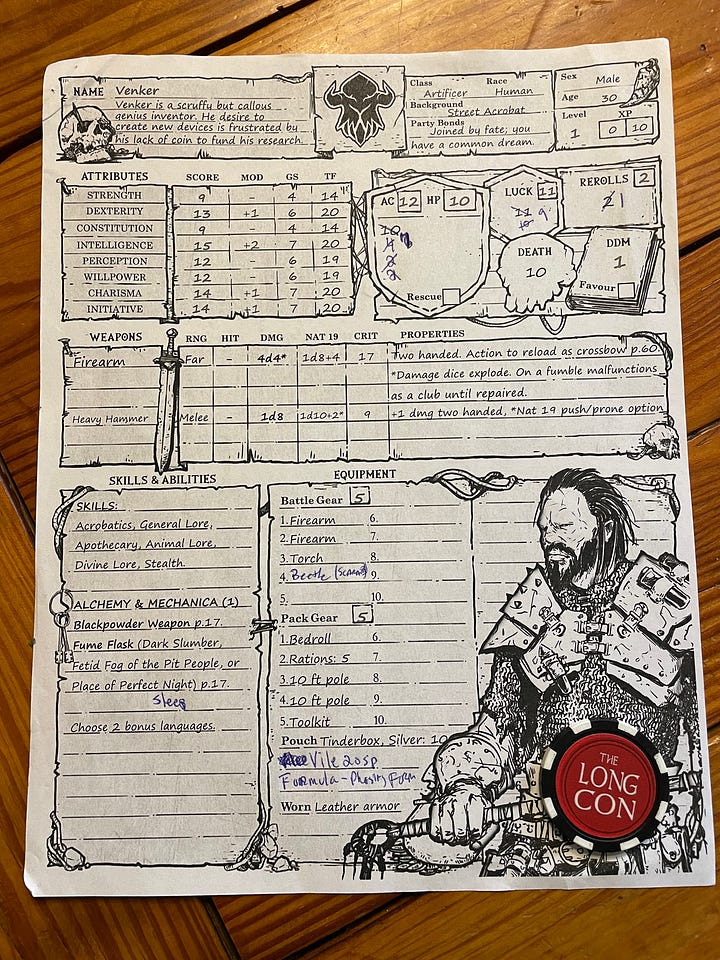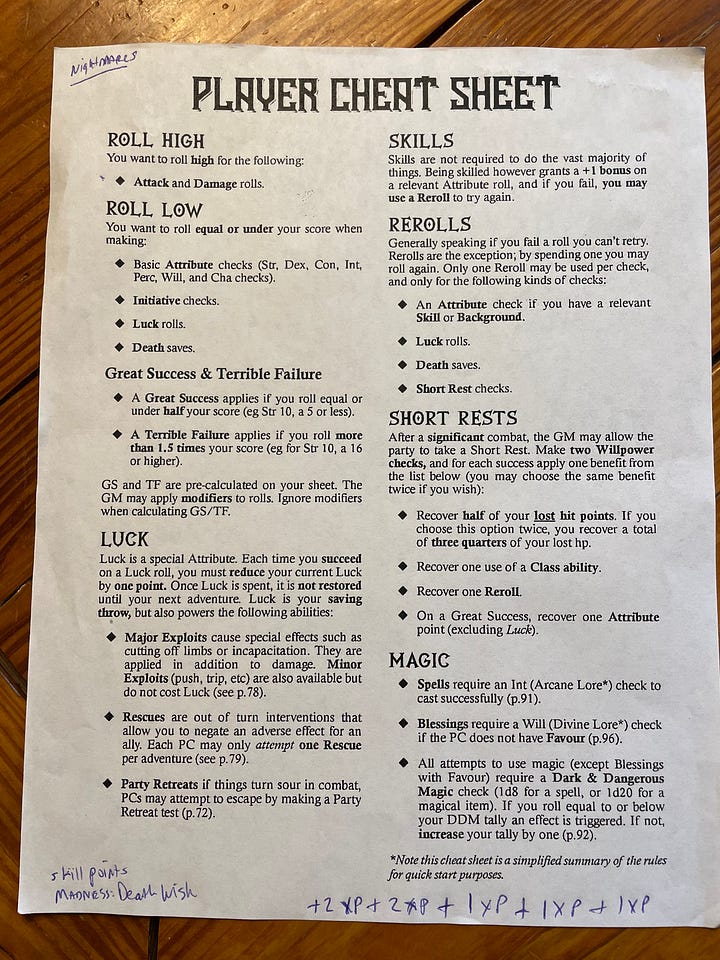A Dungeon Master wears many hats and one of the most important hats is that of teacher. If you can’t help new players understand the rules or their roles, it might be hard getting them back to the table. If you’re a DM, but do not consider yourself a very good teacher, then the more simple teaching tools you have, the easier it will be for your new players to learn the game.
If you’re playing a rules light game, you may not need all the things I’m about to share, but if the game you are teaching is crunchy or has a few moving parts, then teaching tools are invaluable to helping your players learn the system/rules/game play.
There is a theory called the Cognitive Load Theory (CLT),
Coined in 1988 by John Sweller, CLT suggests that our working memory is only able to hold a small amount of information at any one time and that instructional methods should avoid overloading it in order to maximise learning - Society for Education and Training
When it comes to teaching tools in rpgs, the aim is to unburden the cognitive load (the need to know everything to play a game) and prevent overburdening our limited working memory especially when it comes to abstract concepts (saving throws, action economy, etc.)
Here are the 8 must have teaching tools at my table
The Pre-Generated Character Sheet


This character sheet is the best example of a teaching tool of all the new games I played at NTRPG Con. In fact, it has a couple of the things I have listed below including the cheat sheet on the back and the character profile art on the front.
This helped me 1) get into character and 2) know the mechanics of game play so my character could act without looking to the DM as to how to do a thing.
Another good example of a good teaching aid character sheet is this one from Shadowdark. Here is the back of characters sheet and, as you can see, it’s a tri-fold.
Cheat Sheet
There are two kinds of cheat sheets and both are valuable. The first is a how to make a character cheat sheet. If you’re going to have players roll up a character, a set of simple instructions will help guide the way.
Roll this many dice this many times and plug number into an ability.
Choose your armor
Choose your weapon
The second kind of cheat sheet is the mechanics sheet
Here’s what you can do on your turn
This is how combat works
When your character is dying…
If you can put this information on the back of your character sheets all the better, but even if you printed off some index card sized cheat sheets, that would certainly be helpful to a new player.
Name Cards
I know what you’re thinking, “How is this a teaching tool?” Let me splain. I consider this a teaching tool because before the game, I want people around the table to know who everyone is (builds community) and when I say turn your cards around, I’m teaching them it’s time to become someone else, to role play. It’s subtle but it works me at my tables. Give it a try and let me know if it helps, hurts or is neutral.
Spell/Ability Cards
I have been in games, as you probably have as well, where players knew what spells they had but had no idea what they did and neither did the DM which resulted in much Googling or page turning. You could handle this in multiple ways,
If your character sheet as room, put a brief description of what the spells do.
Get some spell cards printed up or write them out on index cards and give them to players at the beginning of the game.
Buy some cards like the ones WotC put out for D&D 5th ed. (2014)
You can buy a complete set of spell cards on Drivethru RPG for 5e or Pathfinder 2e or Shadowdark
You could just say, “What do you think this spell does?” and run with it so you don’t waste time looking stuff up.
Target Number Cards
These target number cards are just a visual reminder of what a new player is shooting for (hoping for) when they roll those dice.
I think these are from Runehammer’s ICRPG 2e, I believe, but don’t hold me to it.
You could also write the number on an index card and hang it from your DM Screen.
Character Profile Art
This piece of art could help players come up with a name or personality for their character. The Tales of Argosa character sheet has artwork on the sheet but if you can’t do that, you can always grab card sized profiles and throw them on the table to see what players think their characters might looks like.
You can pick up over 100 on Drivethru RPG and over here for some cool black and white portraits.
Equipment Pack Cards
I use these cards to teach players that you don’t have to look at your character sheet to always see what you have. In fact, most players, in my experience forget they are even wearing a pack. I’ve had players look at these cards and discover something that got them out of a mess.
Giving a player an equipment pack further teaches them that they are playing a character who is going on an adventure and this what that character might have with them. Of course they can always add more unless you are playing Shdaowdark and then you are only allowed, in most cases, 10 items.
You can grab simple equipment pack cards here or if you like these cards, you can get them over on Etsy.
Tracking Cards
I don’t require players to track their arrows, etc. but I give players these cards to see what they will track, what’s important to them. I tell them they can track their HP, they’re ammo, their spells, etc. and let them choose.
You can pick up your own card here and here is a video I made about them if you’d like more ways to use them.
These are my top teaching aids I use at my table. What are yours and what are you hoping to teach your players with them?
If you’d like to support what I do, check out some of my resources









This is fantastic! Perfect tips for an upcoming game I am DMing with all newbies! 😊